Hi ! We hope this site helps you! ٩(ˊᗜˋ*)و As an Amazon Associate, we earn from qualifying purchases without additional cost. Click to read more about our Privacy Policy or Affiliate Disclosure
Within this article, you will then know how to count kanji stroke properly thus having a higher chance to guess a new kanji stroke correctly!
“But you said that writing is not important!!?”. Yes, we do said that. But learning the stroke is not all about writing.
Why do I need to learn how to count kanji stroke?
Learning to count kanji stroke is important because you will need it to search for the meaning of a kanji in a dictionary, when the kanji is not equipped with furigana. (What is furigana?)
For example, what happened if you encounter some kanji that you can’t read? How are you suppose to look it on your dictionary? Chances are… you won’t always have an OCR (Optical Character Recognition) software ready on your phone or someone to help you read that kanji. So what to do??
Most offline Japanese dictionary will be able to help you with its “search by radical” function. But to search for the correct radical, you will need to know it’s stroke count. Since the way all kanji are sorted is by their stroke count.
What the heck is radical??
A kanji, especially a complicated one, is actually made out of many simple kanji or a shape that is used a lot of times again and again in a lot of kanji.
You could say that radical is a kanji building blocks. Each kanji will have a main distinctive radical that you can use to help you memorize. You could read the details on our Kanji Introduction article.
As you can see below, this kanji 紫 (purple) is made out of 3 simpler shape.
止 (stop), 糸 (string) and ヒ (HI katakana). The total stroke of all of them is the stroke for 紫 (purple), which is 12.
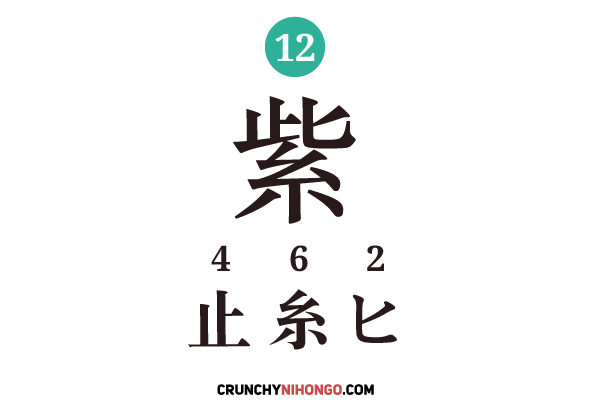
Basic rules on how to draw a kanji stroke.
Now let’s start learning about basic kanji stroke rules!
Note that rules are made to be broken, so you might find some kanji that doesn’t obey the rules. There are not many of them, but don’t be surprised when you see one!
1. Horizontal first, then vertical.
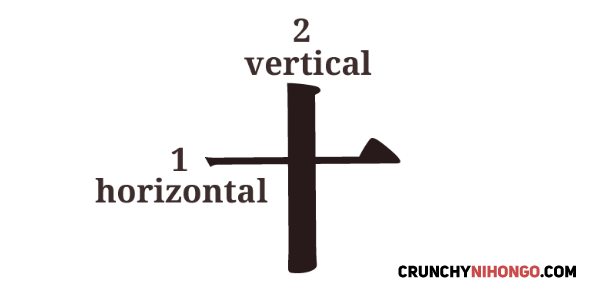
2. Start from the top, finish toward bottom. But notice that in the layout similar to 遊 (play), The left side is considered as bottom, so it’s being drawn last.
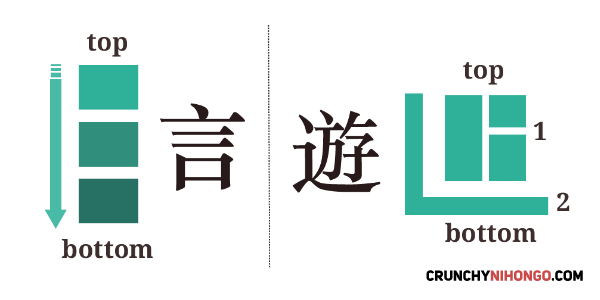
3. Starts from left to right
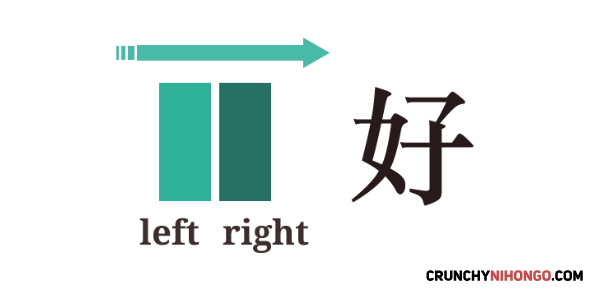
4. Draw the outer part first, fill in the content, then close it up!
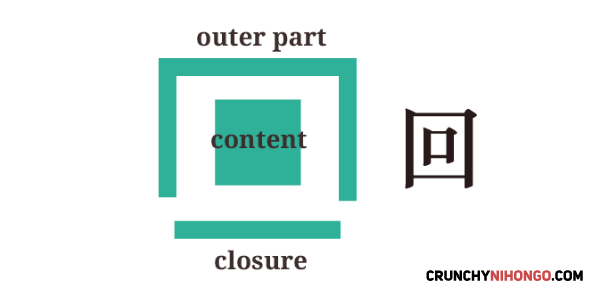
And that’s the basic rules you need to know about kanji stroke! It should help a lot if you are learning to write a kanji! But it doesn’t really help about counting the stroke though… (sorry! but it really is a good thing to know!! tehee!)
Counting strokes in a kanji
Simple kanji can be counted easily since it was very obvious…
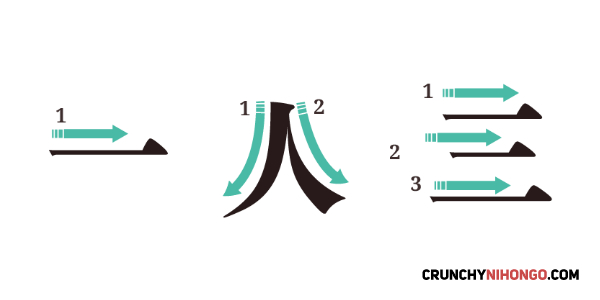
Here’s how it get tricky… The corners!
Yes, this box is not made out of 4 strokes. It is 3 strokes.
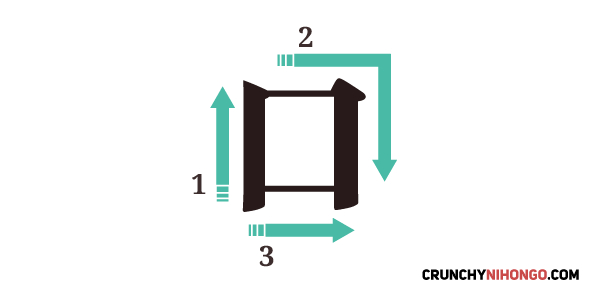
Once you learn that the corner is made out 1 stroke, here’s more sample of kanji which use similar technique.
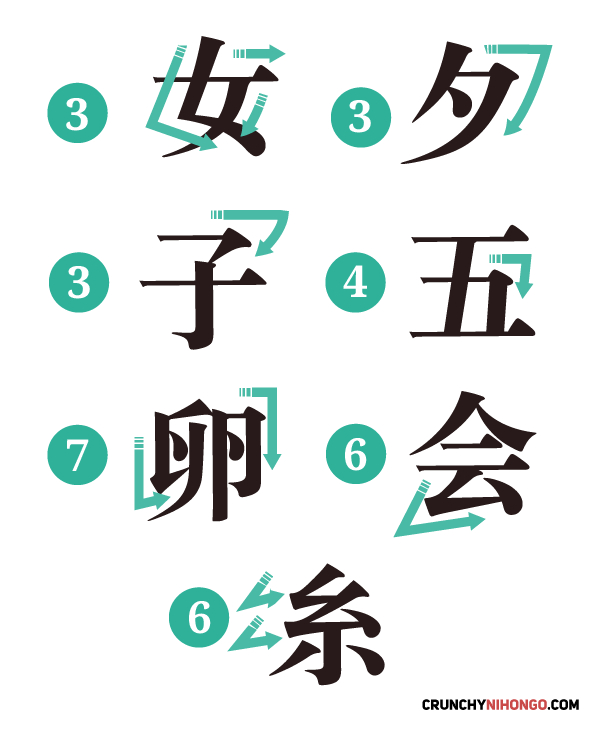
Try to compare these similar kanji. 水 (water), 木 (tree) and 米 (rice).
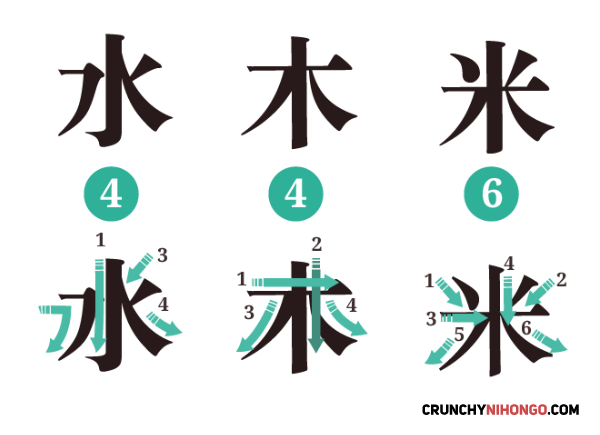
As you can see above, 水 (water), the kanji on the left. It’s left part is made out of one stroke corner while the right part is not. And you will find a lot more sample like what you will see below.

This is the last part and you will see that sometimes we can’t predict if it’s a one stroke corner or not. But after you are familiar with the shape (we call the shape radical), it’s almost certain that it you find another kanji with that radical, it will definitely have the same stroke!
Note: The upper part is 遊 (play). The real version is the left one. It looks like it’s made with a lot of stroke, but it’s just only one stroke. Therefore some font display the right part where it’s seen as one stroke.
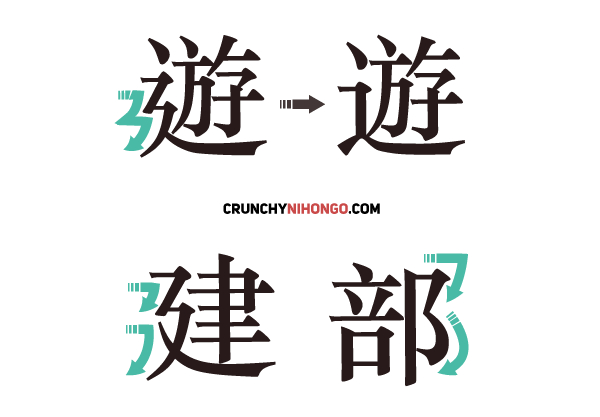
Now you know how to search for that kanji in a dictionary!!
Happy learning~ 。゚✶ฺ.ヽ(*´∀`*)ノ.✶゚ฺ。
